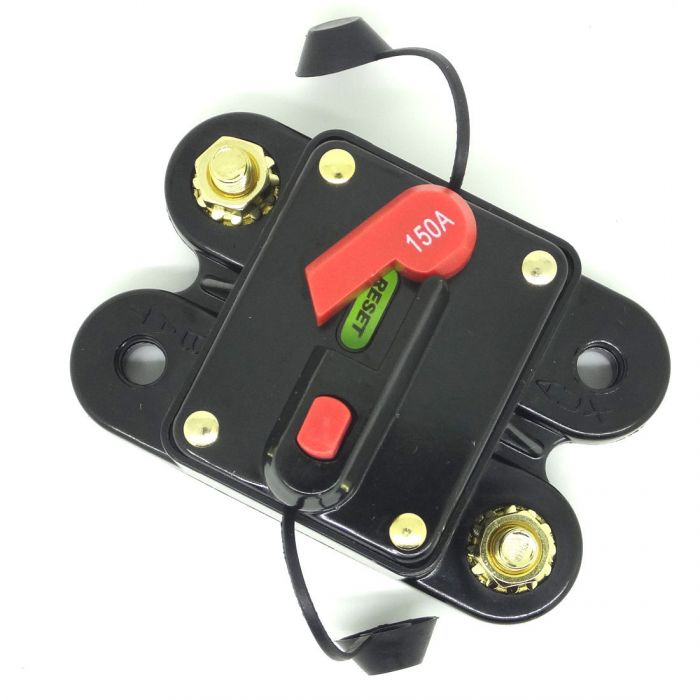 | Home > Maintenance & Mods (L322) > Dedicated Starter Battery |
 
|
|
|
| nicedayforit Member Since: 11 Jun 2011 Location: Beside the Solway Posts: 3988  
|
As in http://www.fullfatrr.com/forum/post400047.html#400047 I fitted a new Bosch S5 110AH battery in the bottom of the rear offside compartment in place of the storage polystyrene container which normal houses the removable towbar.
|
||||||||||||
|
| Olly-Ibiza Member Since: 08 Jun 2016 Location: chester Posts: 49 
|
Why didn't you fit a split charge relay so when the key is out the battery is isolated from the system anyway? |
||
|
| p38arover Member Since: 16 Dec 2015 Location: Western Sydney Posts: 1587 
|
That's where I'll be putting my fridge battery, probably using one of Traxide Electronics dual battery kits. http://www.aulro.com/afvb/projects-tutoria...ation.html Ron B. VK2OTC
|
||
|
| wayneg Member Since: 05 Jun 2013 Location: South Fremantle, Australia ( ex London ) Posts: 808  
|
I fitted a second battery in the same position but used a voltage sensing relay to isolate the 2nd battery whilst the engine is not running. An aux connection on the relay when grounded via a switch overrides the relay if emergency power is required to start the car. Connections are via anderson plugs so I can easily connect my solar panels or remove the battery. On the front main battery I have provided a feed to a plug hidden just inside the grill to connect a charger or solar panels if required. I also disconnected the rear load space 12v cigar lighter type outlet from the car loom and connected it directly to the 2nd battery. The 2nd battery is a drycell so no fumes, spillage or corrosion worries in that enclosed area.
|
||
|
| vnitos Member Since: 18 Nov 2010 Location: pretoria Posts: 390  
|
@Nicedayforit - did you run the +ve cable from the front battery to the rear fuse box or did you connect the +ve cable to an existing fuse (e.g. suspension compressor fuse) in the rear fuse box.
|
||
|
| nicedayforit Member Since: 11 Jun 2011 Location: Beside the Solway Posts: 3988  
|
In a TD6 there is an existing red 16mm2 cable rated at 100A running from the front of the car to supply the rear fuseboard. It can be seen on the third photo looping into the fuseboard connection on the rhs of the fuseboard. On top of it is my 16mm2 red new battery cable also looping into the same connection.
|
||
|
| wayneg Member Since: 05 Jun 2013 Location: South Fremantle, Australia ( ex London ) Posts: 808  
|
I have also fitted a resettable fuse on the second battery for safety and quick isolation. If your second battery is hard wired to the car I would do the same and also have a warning by the main battery to inform a second battery is permanently connected
|
||||
|
| p38arover Member Since: 16 Dec 2015 Location: Western Sydney Posts: 1587 
|
Nice Day, Do you have a clamp to hold the battery down? I can't see one in the pix.
I agree about the cable, Wayne. When you say drycell, do you mean AGM? I'm looking at a deep cycle like I had in the P38A. I'd be interested to know what battery you've fitted as I haven't found an AGM of reasonable capacity that will fit heightwise. The Optima D34 is only 55Ah. The first battery I had in the P38A's wheelwell had a crack in it when I bought it (does it remind you of my Faulty Goods thread on AULRO?) and it opened up under charge/heat and dumped acid into the battery tray I was using. Fortunately, not much damage was done to the car itself but the tray was pretty badly hit. Ron B. VK2OTC 2003 L322 V8 Auto 2007 Yamaha XJR1300 Previous: 1983, 1986 RRC; 1995, 1996 P38A; 1995 Disco1; 1984 V8 County 110; Series IIA Last edited by p38arover on 12th Aug 2016 9:01am. Edited 1 time in total |
||
|
| Baltic Blue Member Since: 13 Aug 2015 Location: North Wales Posts: 3883  
|
Does fitting the second battery have any affect on the alternator?
|
||
|
| nicedayforit Member Since: 11 Jun 2011 Location: Beside the Solway Posts: 3988  
|
@wayne g
|
||
|
| wayneg Member Since: 05 Jun 2013 Location: South Fremantle, Australia ( ex London ) Posts: 808  
|
Ron, The battery I fitted was an Oddessy Extreme PC1700 in a steel shell. I do not use a clamp, just cut the intruding bolt from the bottom of the space, lift up the loom and re-route into the slot under the fuses, then wedge the battery with suitable packing pieces. Once the top is back in situe it seems rock solid. I used one of the Narva type voltage sensing relays that I have used on other cars, cheap and effective.
|
||
|
| Baltic Blue Member Since: 13 Aug 2015 Location: North Wales Posts: 3883  
|
How does this 2nd battery set up compare to the way the L405 is configured for 2 batteries? (Electrically) |
||
|
| Alistair Member Since: 11 Feb 2011 Location: Peterborough / Alicante / Andorra Posts: 8134  
|
Nice idea, however, as above - a few things to consider / google etc -
|
||
|
| Alistair Member Since: 11 Feb 2011 Location: Peterborough / Alicante / Andorra Posts: 8134  
|
Theres quite a good write up here -
|
||
|
 
|
|
| All times are GMT + 1 Hour |
< Previous Topic | Next Topic > |
Posting Rules
|
Site Copyright © 2006-2025 Futuranet Ltd & Martin Lewis
![]()

